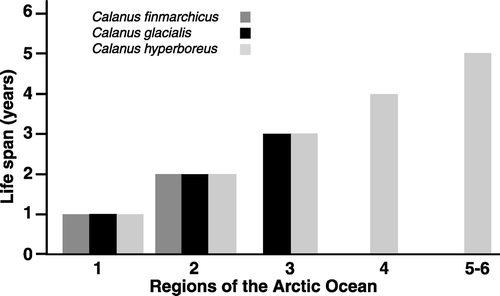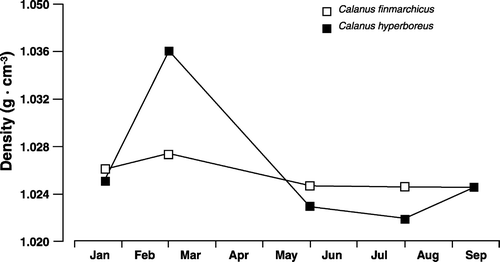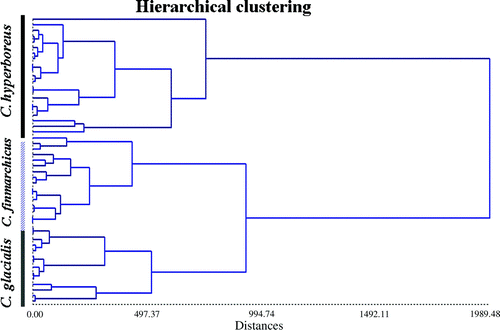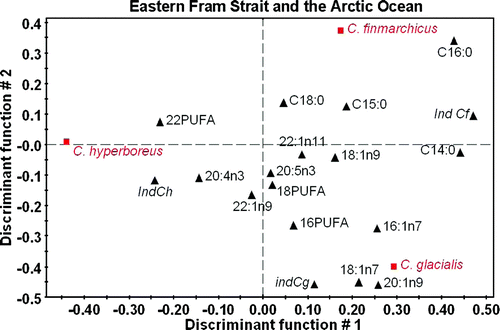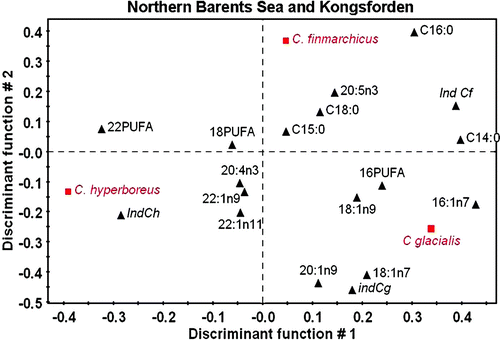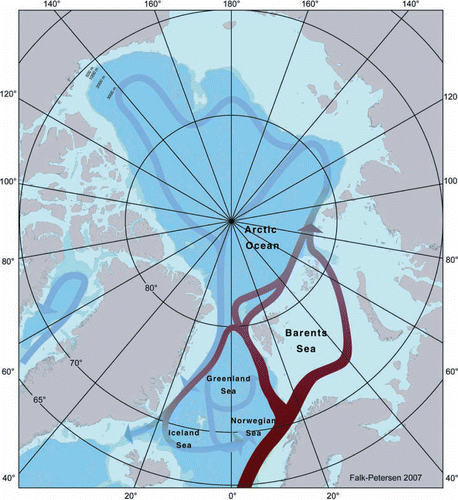Figures & data
Table I. Life span of Calanus finmarchicus, Calanus glacialis and Calanus hyperboreus in Arctic waters.
Table II. Over-wintering stages and spawning periods of Calanus finmarchicus, Calanus glacialis and Calanus hyperboreus in Arctic waters.
Table III. Prosome length (mm), wet mass (WW), dry mass (DW) and lipid mass (LW) as mg ind–1, and % total lipid of DW in different developmental stages of Calanus finmarchicus, C. glacialis and C. hyperboreus. Length from Hirche et al. (Citation1994), WW, DW and % total lipid of DW from Scott et al. (Citation2000). DM of stages I–II are calculated after Mauchlene (1989).
Table IV. Fatty acid composition of polar lipids of Calanus finmarchicus, Calanus glacialis and Calanus hyperboreus from the Arctic.
Table V. Fatty alcohol composition of wax esters of Calanus finmarchicus, Calanus glacialis and Calanus hyperboreus from the Arctic.
Table VI. Fatty acid composition of wax esters of Calanus finmarchicus, Calanus glacialis and Calanus hyperboreus from the Arctic.


